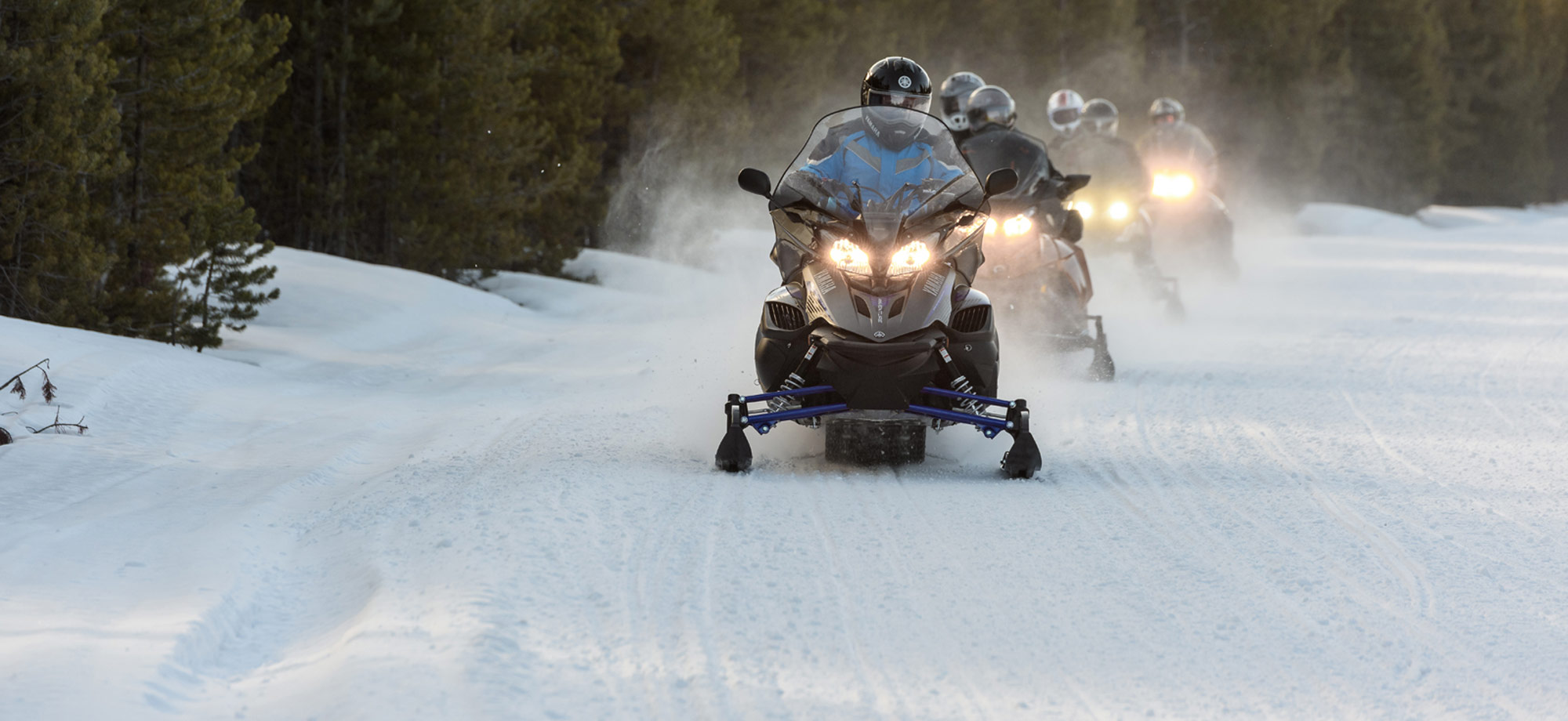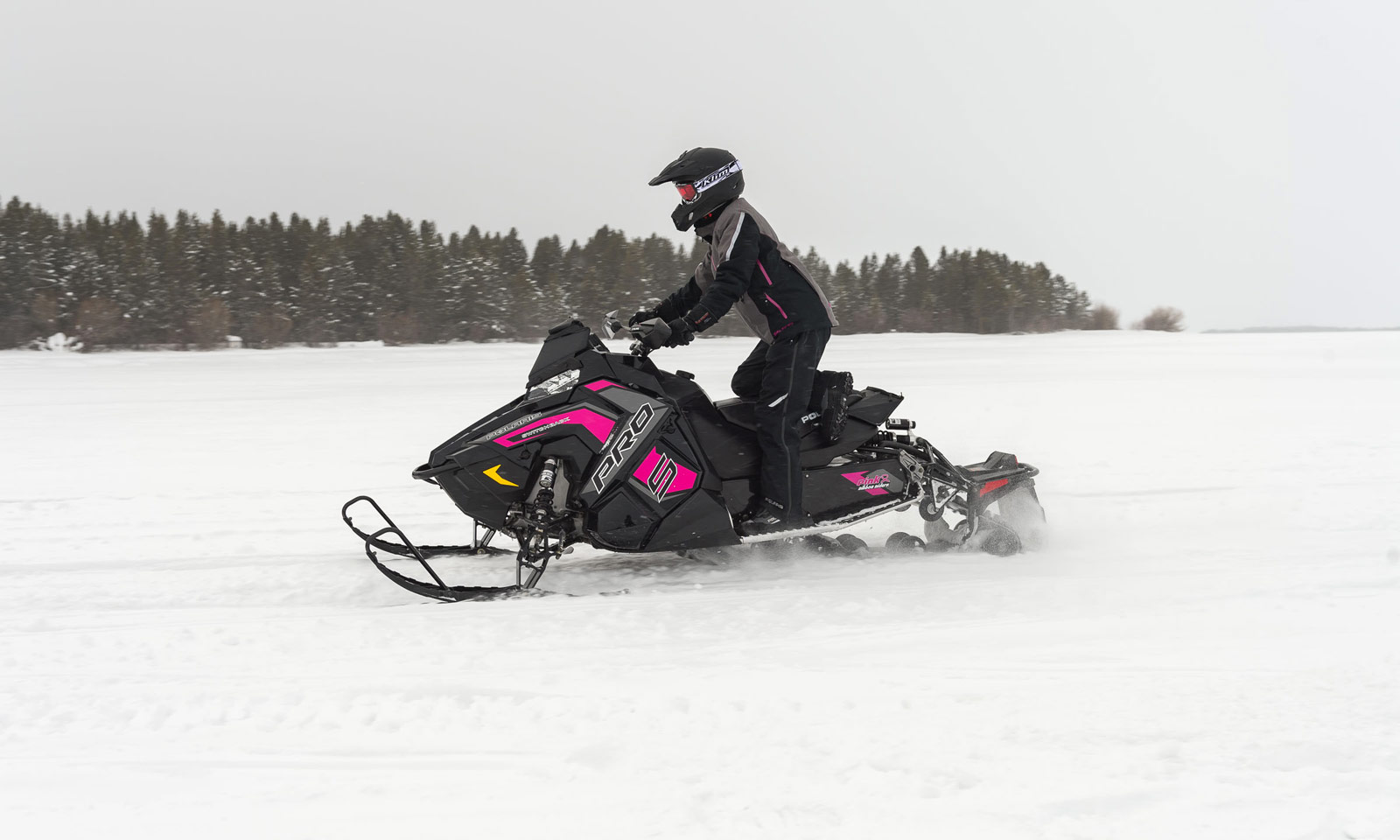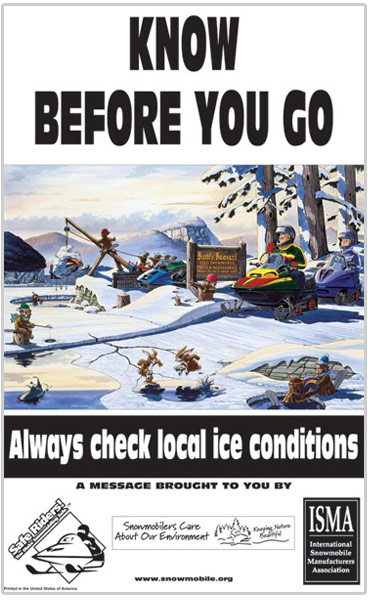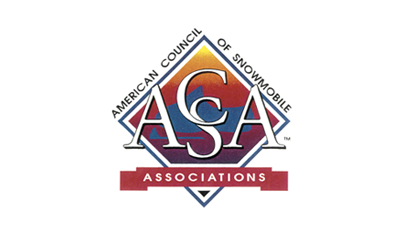Ice
Ice conditions can change quickly. Learn the proper safeguards to properly travel over ice.
Click the curriculum tab to begin this course section.
Ice
Ice can always be dangerous because of changing conditions and inconsistencies in its thickness, particularly when there is running water beneath it. The safest snowmobiling rule is to never cross lakes or rivers since ice thickness to support a snowmobile can never be guaranteed. Never venture onto lakes or rivers unless you are absolutely certain of a safe route across the frozen surface.In addition to the danger of plunging through thin ice, you have far less traction for starting, turning, and stopping on ice. Always use extreme caution and travel at lower speeds when riding on ice. Remain seated on the snowmobile to help keep the center of gravity low and to aid in controlling your machine. A snowmobile can be extremely hard to control on ice without additional traction devices; consequently fast stops are impossible and spinouts far too common on bare ice. Avoid heavy braking to stop; instead let up on the throttle allowing the machine to slowly coast to a stop.
Snowmobile collisions on lakes account for a significant number of crashes because riders often wrongly assume lakes are flat, wide open areas, totally free of obstructions. Realize that if you can ride and turn in any direction while operating on a lake, so can other riders, so the threat of a collision can come from any direction at any time. Additionally, lakes are not always free of obstructions since ice heaves, slush pockets, or frozen mounds from ice fishing can be encountered unexpectedly and change from day to day.
Never trust the judgment of other snowmobilers by simply following their snowmobile tracks across ice. You are responsible for your own safety so, if you choose to ride across ice, be absolutely certain the ice is safely frozen by testing the ice thickness.
It is critical to evaluate the ice quality and type before traveling out onto it. New ice that is clear and hard is the only kind of ice recommended for travel. Always avoid:
- Slushy ice
- Ice on or near moving water (i.e. rivers, currents, channels)
- Ice that has thawed and refrozen
- Layered or 'rotten' ice caused by sudden temperature changes
- Snow on ice that acts as an insulating blanket that prevents hardening
- Pressure ridges in the ice due to wind, current, or ice pressure
Getting Out if You Fall Through
Drowning is a leading cause of snowmobiling fatalities. If you ride on ice often, consider wearing a buoyant floatation snowmobile suit. It is also a good idea to wear a set of commercial ice picks, which have spring-loaded sleeves that cover the points and are attached to a cord so they can be threaded through the sleeves of your jacket.
If you fall through the ice, stay calm. Realize that air trapped inside your snowmobile suit (even a non-buoyant one) and helmet may help keep you afloat for several minutes. Extend your arms out forward in front of you and onto the unbroken ice surface in an attempt to catch yourself. Kick your feet to help propel you onto the ice, like a seal. If the ice keeps breaking, continue kicking and trying to move toward shore or the direction from which you came. Use anything sharp like ice picks, keys, or a knife to dig into the ice to help pull you forward. Don't remove your gloves or mitts. Once you are on the ice, crawl or roll away from the hole. Do not attempt to stand up until you are well away from the hole.







